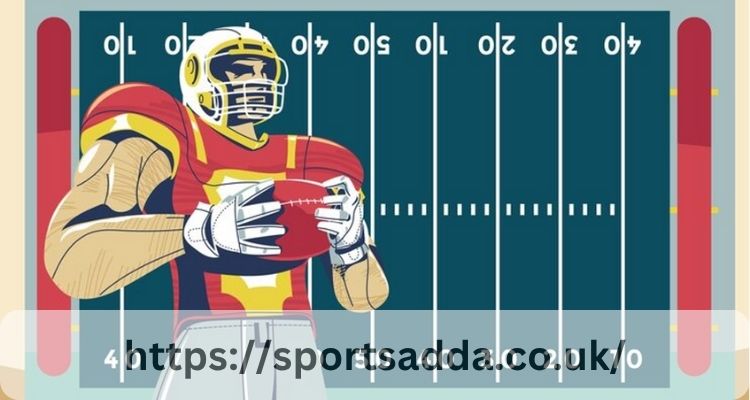When most people think of NFL betting, moneylines and totals often come to mind. But point spreads are where strategy and odds meet. For anyone serious about staying informed through NFL betting news and building a strong foundation in football wagering, understanding how point spreads work is essential. This guide breaks down point spreads clearly, so bettors can follow the lines, evaluate matchups, and understand what is really at stake.
What Is a Point Spread?
A point spread is a number set by oddsmakers to level the playing field between two teams. Instead of simply picking a winner, bettors choose a team to either win by a certain margin (the favorite) or avoid losing by too much (the underdog).
For example, if the Kansas City Chiefs are listed at -6.5 against the Chicago Bears, the Chiefs must win by at least 7 points for a bet on them to be successful.
On the other hand, a bet on the Bears would win if they lose by 6 or fewer points or win the game outright. The goal of the spread is to generate even betting on both sides. That is why spreads shift throughout the week based on injuries, weather, or public action.
How Oddsmakers Set the Spread
Oddsmakers do not just guess. They use analytics, recent performance, injuries, matchups, and even betting behavior to decide on a fair spread.
Key factors include:
- Quarterback performance and injury status,
- Strength of the offensive and defensive lines,
- Recent head-to-head results and home-field advantage,
- Weather forecasts and schedule fatigue.
Public perception also matters. A high-profile team with a large fan base might have a slightly inflated spread to balance out lopsided betting activity. The best bettors stay updated with NFL betting predictions and watch how spreads move during the week.
Reading Spread Notation
Most sportsbooks display spreads using a plus or minus sign:
- A minus (-) shows the team is the favorite,
- A plus (+) shows the team is the underdog.
Each spread also has accompanying odds. For instance:
- Buffalo Bills -3.5 (-110),
- New England Patriots +3.5 (-110).
The number in parentheses is the betting line. A line of -110 typically means a bettor would need to wager $110 to potentially win $100. These odds are common and reflect the built-in margin, or “vig,” that sportsbooks charge.
Pushes and Half-Points
If a team is favored by exactly 3 points and wins by 3, the bet results in a push, meaning all wagers are refunded. To avoid this, sportsbooks often use half-points (like -3.5 or +6.5), which eliminate the chance of a tie.
This is why key numbers, like 3, 6, and 7, are so important. A large number of NFL games are decided by those margins, so a half-point difference can change the entire outcome.
Favorites vs. Underdogs
Betting on favorites means believing that the team will win convincingly. But underdogs often cover the spread, especially in games with uncertain matchups or late-week roster changes.
Here is what bettors usually look for:
- Underdogs with strong defensive units can keep scores close,
- Home underdogs often perform better than expected,
- Favorites with explosive offenses can pull away late, even after a tight start.
Understanding these patterns takes time, but following NFL betting insights from trusted sources can help bettors stay ahead of public perception.
Line Movement and Timing
Point spreads are not fixed. They move based on where the money goes. If a large number of bets come in on one team, oddsmakers might adjust the spread to encourage more action on the other side.
For example, if the New York Giants open at +4.5 and receive heavy support, the line might shift to +3.5. That difference matters. A field goal win no longer covers.
This is where timing comes in:
- Early-week bets often offer better value before public money shifts the line,
- Late-week bets may reflect more accurate information, including injury reports and confirmed starters.
Experienced bettors track line movement and monitor how spreads compare across sportsbooks. One useful resource for tracking odds and spreads is FanDuel Sportsbook, where updated betting lines reflect real-time market movement.
Point Spread Betting Example
To see how point spreads work in real situations, consider this example:
The Philadelphia Eagles are playing the Minnesota Vikings. The sportsbook sets the spread at:
- Eagles -5.5
- Vikings +5.5
If the Eagles win 28-20, they cover the spread by 2.5 points. Bettors who backed the Eagles win their bet. But if the Eagles win 24-20, the Vikings cover the spread by just half a point, even though they lost the game. That is why every point matters.
Common Mistakes to Avoid
Even experienced bettors can fall into traps with point spreads. Here are a few pitfalls:
- Ignoring injuries or weather updates,
- Overreacting to one strong or weak performance,
- Betting with emotion or loyalty to a favorite team,
- Not comparing spreads across sportsbooks.
It is also important to separate value from hype. A team might win often but struggle to cover the spread due to inflated lines.
Using Point Spreads Responsibly
Point spread betting adds depth and strategy to NFL wagering. But it is not guaranteed. Unexpected plays, coaching decisions, and late-game scenarios can all change the result. The best bettors play the long game. They follow trusted NFL betting news, spot trends, and avoid chasing losses. Sometimes, the smartest move is knowing when not to bet at all.
Why Spreads Still Matter in a Player-Prop Era
With player props and live betting growing in popularity, it is easy to overlook traditional point spreads. But spreads still offer one of the clearest indicators of how sportsbooks and analysts view each matchup.
Spreads shape game scripts. They suggest how close a game is expected to be, which influences player usage, tempo, and strategy. Even for those betting on props, spreads can inform decisions.
For example:
- A large spread may reduce late-game passing attempts from a favored quarterback,
- A close spread may signal a higher snap count for lead running backs.
Understanding spreads helps bettors make smarter overall choices.
Keep It Simple, Stay Sharp
Point spreads aren’t just numbers—they reflect team strength, public sentiment, and expert analysis. Learning to read them, track movement, and understand the context helps bettors make smarter decisions. By staying up to date with odds and how they shift week to week, bettors can develop more confident, calculated strategies. In the long run, that insight is what separates instinct from informed wagers.


